Portable Power tool Drill Chuck
Portable power tools
- Portable power tools are commonly used in electrical work. Manufacturers’ instructions must be referred to for step-by-step instructions. Care and maintenance should be observed.
Safety instructions
- Read the manual carefully and learn the applications, operating limitations and potential hazards of the tool before attempting to operate it.
- Pay particular attention to the following important points.
- Keep work area clean. Cluttered areas and benches invite accidents.
- Avoid dangerous environments. Do not expose tools to rain. Do not use power tools in damp or wet locations and keep work area well lit.
- All visitors (and children) should be kept at a safe distance from work areas.

- Store idle tools. When not in use, tools should be stored in dry, high or locked-up places, out of reach of children.
- Do not force a tool or use excessive feed rates. It will do the job better and more safely at the rate for which it was designed.
- Use the right tool. Do not force a small tool or an attachment to do the job of a heavy duty tool.
- Wear the proper apparel. Loose clothing or jewellery will get caught in moving parts.
- Use safety glasses, and also a face or dust mask if the cutting operation is dusty.
- Never carry a tool by the cord or yank it to disconnect it from a receptacle. Protect the cord from heat, oil and sharp edges.
- Secure the work. Use clamps or a vice to hold work. It is safer than using your hand and it frees both hands to operate the tool.
- Do not over-reach: keep proper footing and balance at all times.
- Maintain tools with care. Keep tools sharp and clean at all times for best and safest performance. Follow instructions for lubricating and changing accessories. When servicing, use only identical replacement parts.
- Disconnect tools when not in use, before servicing, or when changing accessories such as blades.
- Remove chuck keys and wrenches. Form the habit of checking to see the keys and adjusting wrenches are removed from the tool before turning it on.
- Avoid accidental starting. Do not carry a plugged-in tool with a finger on the switch. Be sure the switch is off when plugging in.
- Do not operate portable electric tools in gaseous or explosive atmospheres. Motors in these tools normally spark and sparks may ignite flammable gas or vapour.
Extension leads
- When using a tool at a considerable distance from the power source, an extension cord of adequate size must be used for safety and to prevent loss of power and overheating.
- Before using cords, inspect them for loose or exposed wires and damaged insulation. Make any needed repairs or replacement before using your power tool.
- When a tool is used outdoors, use only extension cords suitable for this purpose.
- When extension cords or power tools are being used in open or damp situations, the chance of damage or current leakage to the frame of the tool or the material being machined is very high and could result in severe electric shock. The use of an RCD is mandated in this situation.
Portable electric generators
- Electricity generators are often used in remote locations. The generator is mounted onto a frame and is ideal for lifting into location, see Figure 1.
- The starting operation is similar to a lawn mower in that it has a cord start, petrol mix and a throttle to control speed.
- The speed of the motor is automatically increased as more electrical power is required. This is achieved by means of a ‘governor’.
Figure 1: A portable generator
Electric drills
- Drills most commonly range between 6 and 13 mm sizes for general applications. The size designation of the drill (6, 10 or 13 mm) refers to the maximum diameter drill bit or accessory attachment shank that will be accepted by the chuck of the drill. Generally, as the chuck size increases, so does the power capacity of the drill. The larger drills are geared to deliver slower speeds and more torque, or twisting power.
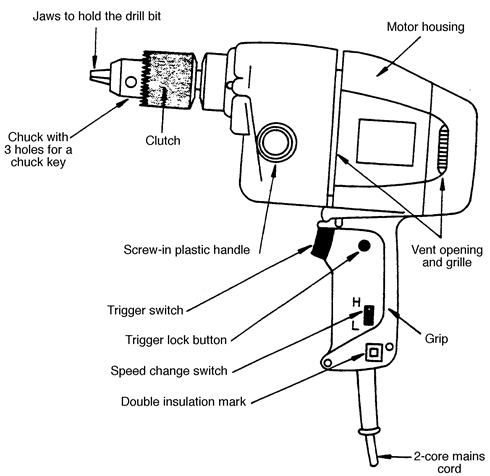
Figure 2: Example of a portable electric drill
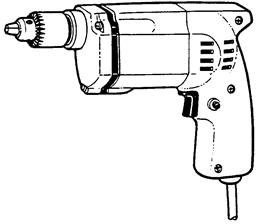
Figure 3: A light-duty portable drill
- A 13 mm drill is the most appropriate for bigger projects and more frequent use in concrete, or with large hole saws. A 13 mm drill is also the best choice for the tradesman or for continuous heavy duty use.
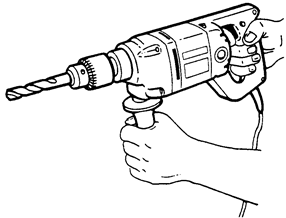
Figure 4: A heavy drill
Cordless drills
- These drills have a rechargeable battery as their power source. They are capable of performing as well as any of the 10 mm drills with the added advantage that they can be used where no electrical power is available.
Electric drills may have additional features, including variable speed, or selectable speed, and hammer action.
- Purpose-built hammer drills are used where masonry drilling is to be carried out. This drill also provides an impact action that helps to break up the masonry at the drill tip.
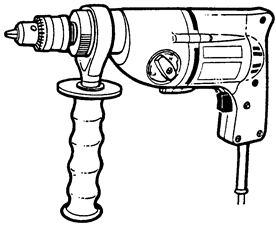
Figure 5: A hammer drill
Care of electric drills
- A wide range of portable circular saws is available today for both home and constructional use. Their cutting power and speed make them useful in many situations. On-the-job portability is another advantage that eliminates the need to manhandle large, heavy or awkward pieces of timber.
- Generally the motors are rated from 1 kW to 2 kW. Where the saw is to be used for heavier work, or consistently for extended periods of time, a heavy duty machine with a larger motor should be used to prevent overheating.
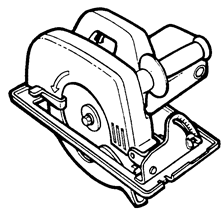
Figure 6: A circular saw
Jig saws
- A jig saw consists of a small blade attached to the tool by means of a mechanical linkage that moves the blade up and down at approximately 2500 strokes per minute. Because the blade is so narrow, it can be used to cut curved lines. The jig saw can also be used for cutting out shapes within a board; in this case a starting hole must first be drilled. Different blades for various materials are available.
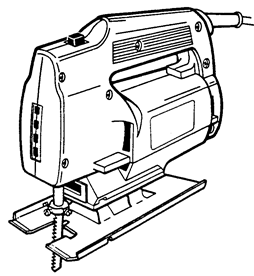
Figure 7: A jig saw
